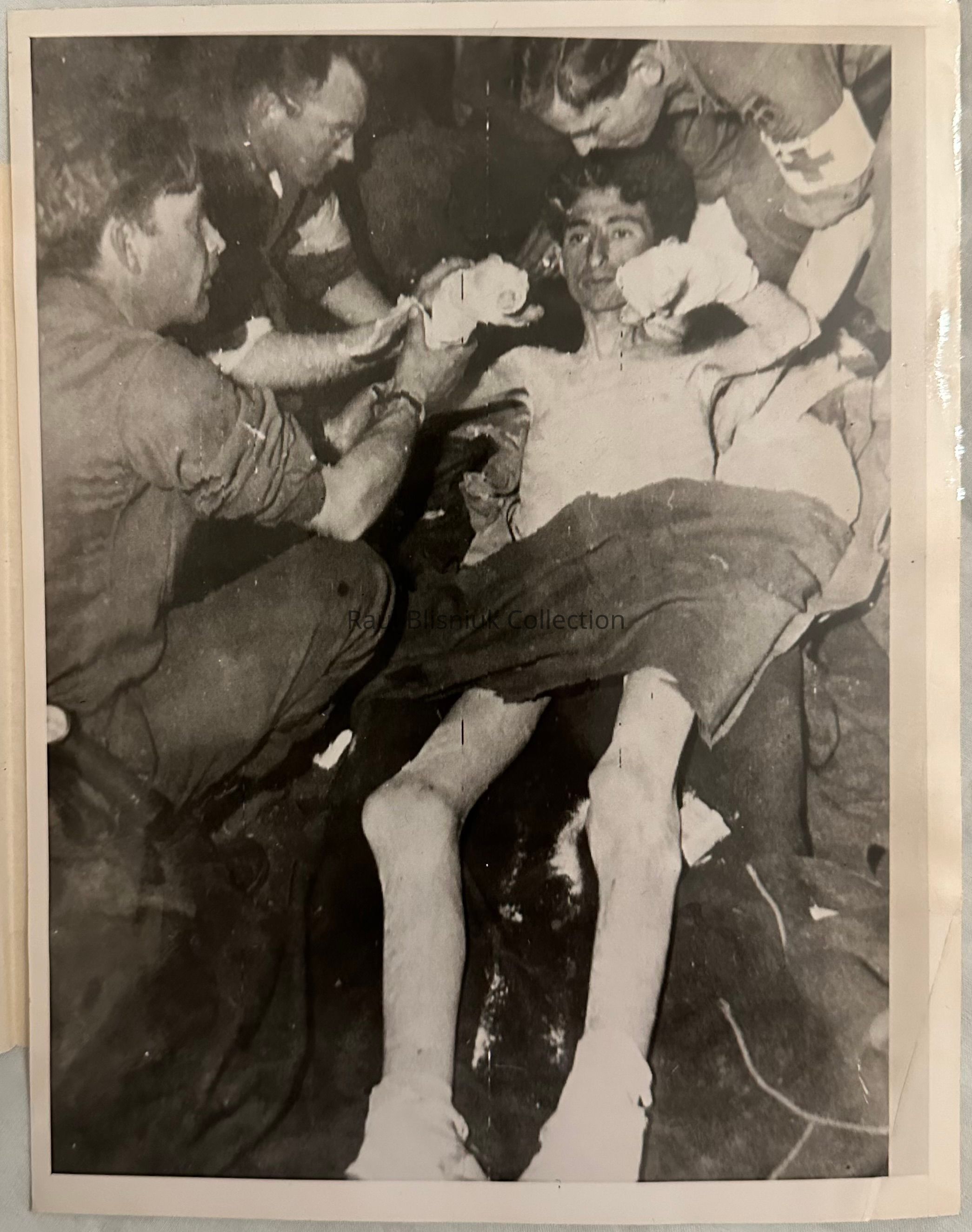Name/Title
American Prisoners of War in Germany - Original 1945 Radiophoto Times HeraldEntry/Object ID
HM006Description
American medics treat an emaciated soldier, Pvt. Alvin L. Abrams of Philadelphia, one of 63 American POWs who survived a death march from the Berga concentration camp and was liberated by soldiers of the 357th Infantry Regiment.
CAN BE READ:
International News Photos, Washington D.C. April 26th '45
AMERICAN SOLDIERS - who were taken prisoner by the Germans during the Ardennes battle have just been released by men of the 357th Inf. 90th Inf. Div. 63 emaciated immated of a German hospital receive medical care from the U.S. Medical Corps after their release. The men were too weak to walk. PHOTO SHOWS -- half-starved Pvt. Alvin L. Abrams, Philadelphia, Pa. with Medics at Marktreidwitz, Germany, after liberation by 3d U.S. Army troops. He was with 28th Inf. Div. before his capture. (US Signal Corps Radiophoto) (Wash.ser.NS)
------------------------------
Caption
American medics treat an emaciated soldier, Pvt. Alvin L. Abrams of Philadelphia, one of 63 American POWs who survived a death march from the Berga concentration camp and was liberated by soldiers of the 357th Infantry Regiment.
Date
1945 April 22 - 1945 May 28
Locale
Marktredwitz, [Bavaria; Bayreuth] Germany
Photo Credit
United States Holocaust Memorial Museum, courtesy of National Archives and Records Administration, College Park
Event History
Thousands of American soldiers captured in December 1944 during the Battle of the Bulge were taken to Stalag 9B POW camp in Bad Orb, Germany. The Jewish GIs were housed in separate barracks under SS guard for several weeks. On February 8, 1945, a group of 350 soldiers including the Jewish GIs, together with others identified as undesirable, were boarded onto boxcars without food or water and transferred to the Berga labor camp, a sub-camp of Buchenwald, where they arrived on February 13, 1945. There they were forced to work twelve hour days digging tunnels into the cliffs bordering the Elster River, where the Germans intended to build an underground synthetic fuel factory. The prisoners, who were fed only bread and soup, deprived of all sanitation facilities and beaten regularly, died at an enormous rate. When the order to evacuate the camp was given, the surviving American POWs were put on a death march, during which dozens more perished before their liberation on April 22, 1945 by units of the 11th Armored Division. A handful successfully managed to escape, but only approximately half of the original 350 survived.
[Source: Cohen, Roger, "Where G.I.s were Consumed by the Holocaust's Terror," New York Times, Tuesday, April 17, 2001, p.B1]
https://www.ushmm.org/wlc/en/article.php?ModuleId=10006178. https://www.ushmm.org/wlc/en/article.php?ModuleId=10005162.
Rights & Restrictions
Photo Source
National Archives and Records Administration, College Park
Copyright: Public Domain
Source Record ID: 111-SC-20489?
United States Holocaust Memorial Museum
Copyright: United States Holocaust Memorial Museum
Provenance: Robert Steinke
Source Record ID: Collections: 2004.228
Second Record ID: Collections: 2004.10
